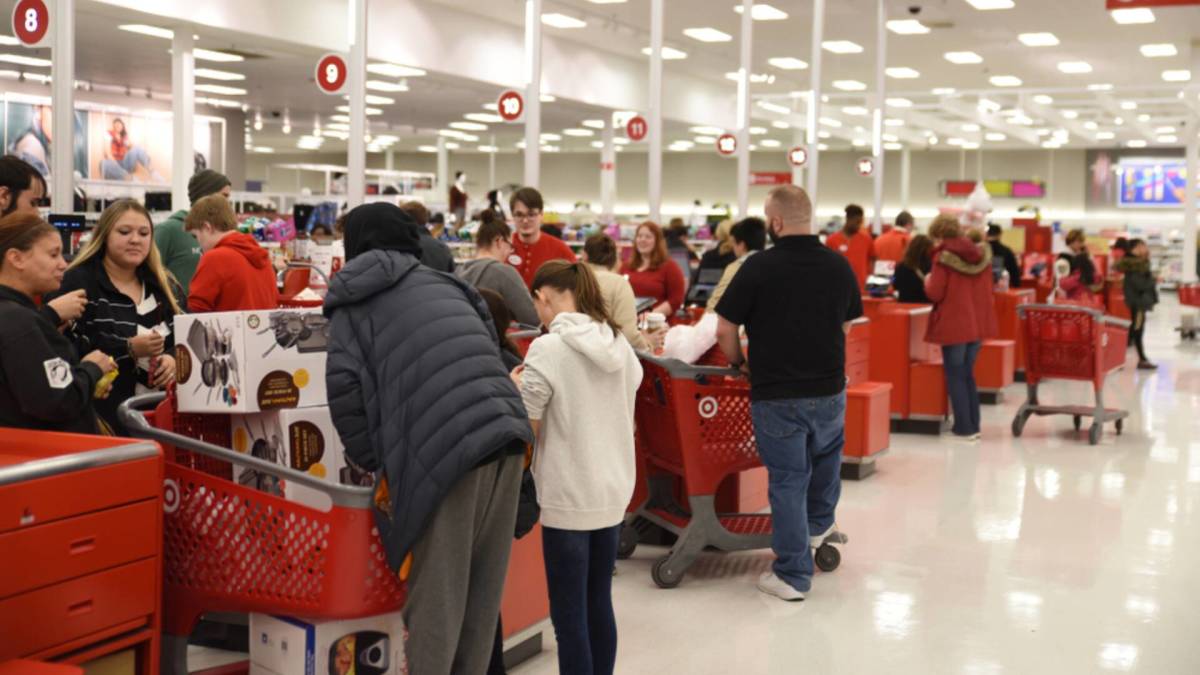While many retailers tend to close locations when faced with mounting challenges, Target is betting on massive growth. This is true even as it navigates sales declines, shifting consumer habits, and even backlash over its stance on social issues.
Target announced it will open seven new stores this fall, six of which will be larger than its standard 125,000 square-foot format. These new locations are part of a broader strategy to open more than 300 stores over the next decade.
The new large-format stores, ranging from 146,000 to 149,000 square feet, are designed to serve as both shopping destinations and fulfillment hubs for online orders. Through its “store-as-hubs” model, Target is building locations that can hold more inventory, allowing it to expand product offerings and streamline digital order fulfillment, while reducing reliance on separate warehouses.
All seven new stores will open between October 12 and 19 in the following locations.
New large-format Target stores
- Arizona: 37854 N Gantzel Road, Queen Creek, AZ 85140 (146,000 sq. ft.)
- Florida: 27920 Pink Flamingo Lane, Wesley Chapel, FL 33544 (149,000 sq. ft.)
- Nebraska: 3400 West 13th Street, Grand Island, NE 68803 (148,000 sq. ft.)
- South Carolina: 5345 Crossridge Boulevard, Indian Land, SC 29707 (149,000 sq. ft.)
- Virginia: Building 8, 24670 Arcola Landing Drive, Sterling, VA 20166 (148,000 sq. ft.)
- California: 205 South Clovis Avenue, Fresno, CA 93727 (148,000 sq. ft.)
- Texas: 12565 Arc Lane, Stafford, TX 77477 (125,000 sq. ft. standard format)
Target has already been rolling out these larger formats, with two openings this spring and three this summer. By the end of 2025, it expects to open around 20 new stores, the majority of which will be large formats, and remodel many existing locations.

Image source: Shutterstock
Target’s “Store-as-Hubs” strategy
Target’s (TGT) store-as-hubs model leans heavily on its physical locations. Today, 95% of Target’s digital orders are fulfilled directly from stores, including same-day delivery through Target Circle 360, which now covers approximately 80% of the U.S. population.
By consolidating fulfillment into stores, Target aims to reduce its reliance on warehouses, cut costs, and reinvest in a broader assortment and customer experience.
Related: Target makes deal to borrow a little Taylor Swift magic
These efforts are tied to the company’s goal, announced in March, to generate more than $15 billion in sales growth by 2030 through a mix of physical, digital, and social commerce investments.
“We built a profitable $20 billion digital business in what feels like it happened overnight,” said Target CEO Michael Fiddelke in an earnings call. “You’re juggling that digital business growth and working every day to maintain a great in-store experience. And you’ve heard me say from the start of the year, bringing more consistency to that in-store experience is a key priority of ours.”
Walmart takes a different approach
While Target focuses on larger, dual-purpose stores, Walmart (WMT) is taking a different approach to achieving e-commerce profitability.
Walmart has strengthened its supply chain, launched a third-party marketplace, and expanded delivery and pickup services. It also created its Walmart+ subscription-based membership, a similar concept to Target Circle 360.
However, when it comes to fulfillment, Walmart is testing “dark stores,” which are small warehouses that operate exclusively for online orders and aren’t open to the public. One pilot is already open in Dallas, Texas, with another planned for Bentonville, Arkansas. If successful, the company may explore even larger expansions.
Online shopping reshapes retail
The rise in popularity of online shopping continues to reshape consumer habits and retail.
According to Capital One Shopping, U.S. online grocery sales increased 104% during the pandemic and are projected to grow 12.3% annually through 2029. In 2025, more than 148 million Americans, nearly 52% of the population, are expected to buy groceries online.
Target’s latest results reflect this shift. In the second quarter of 2025, net sales fell nearly 1% year over year, with comparable in-store sales dropping 3.2%. However, digital comparable sales grew 4.3%.
According to a McKinsey & Company report, strategically locating regional distribution centers, setting up microfulfillment centers in densely populated areas, and freeing up backroom space in local stores for online order fulfillment will accelerate parcel delivery, a key draw to consumers.
Target CFO Jim Lee agrees, saying in an earnings call, ” We will continue to leverage our stores as fulfillment hubs. It’s an incredibly fast, efficient and capital-light approach to running an omnichannel business and to ensure our store teams can deliver an outstanding in-store shopping and digital experience.”
Related: Walmart makes a surprising in-store move with its online marketplace
#Target #announces #plan #solve #growing #customer #problem